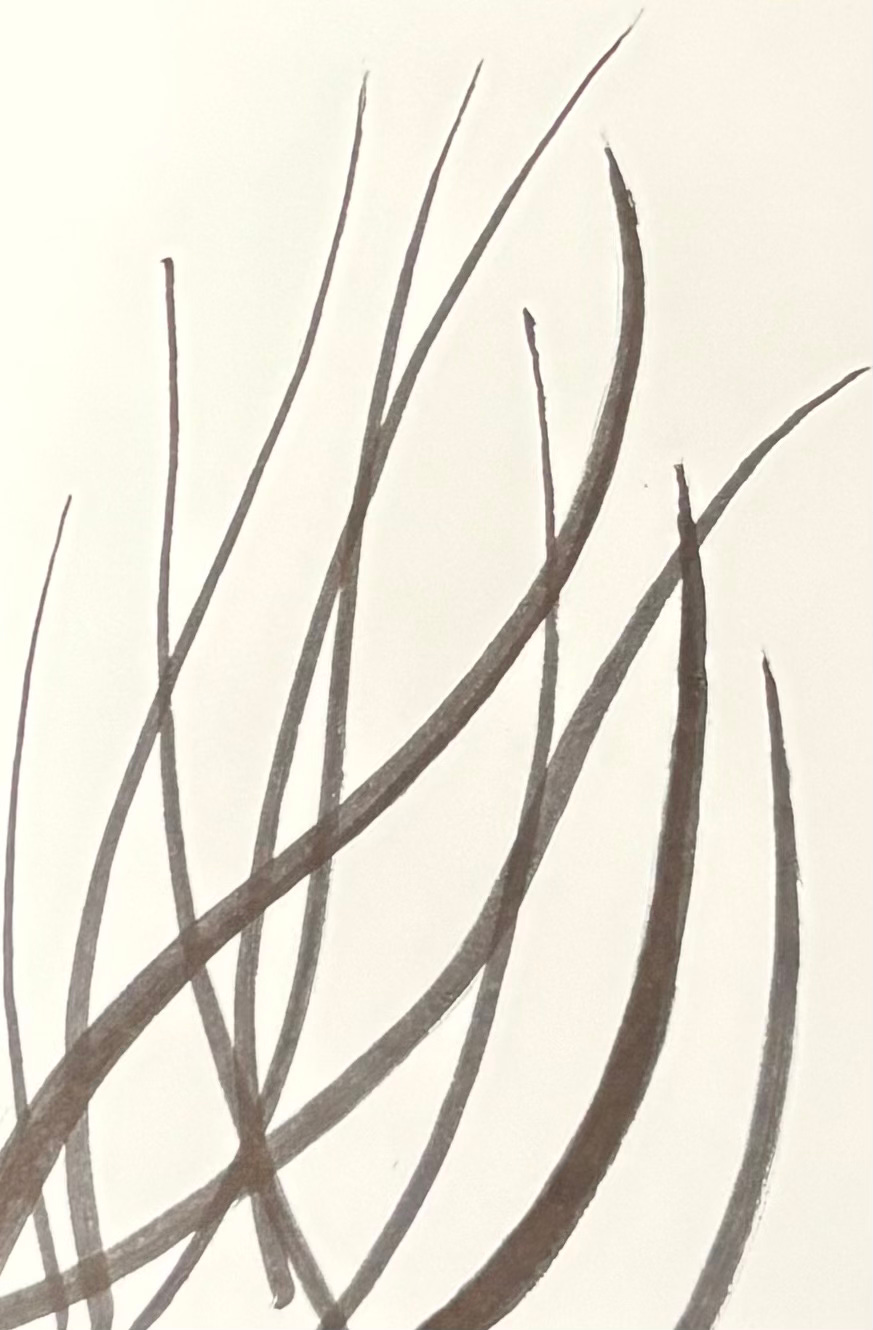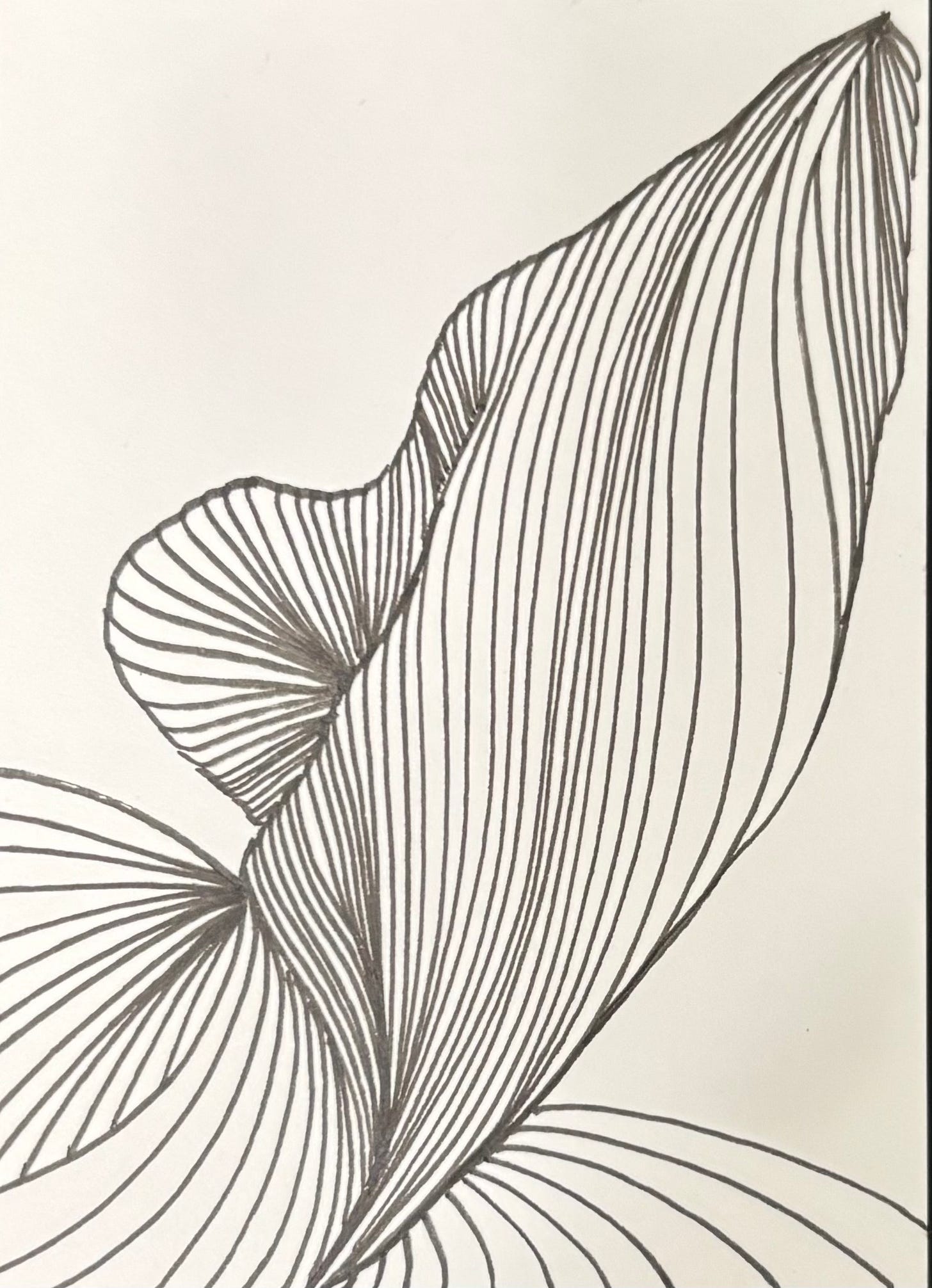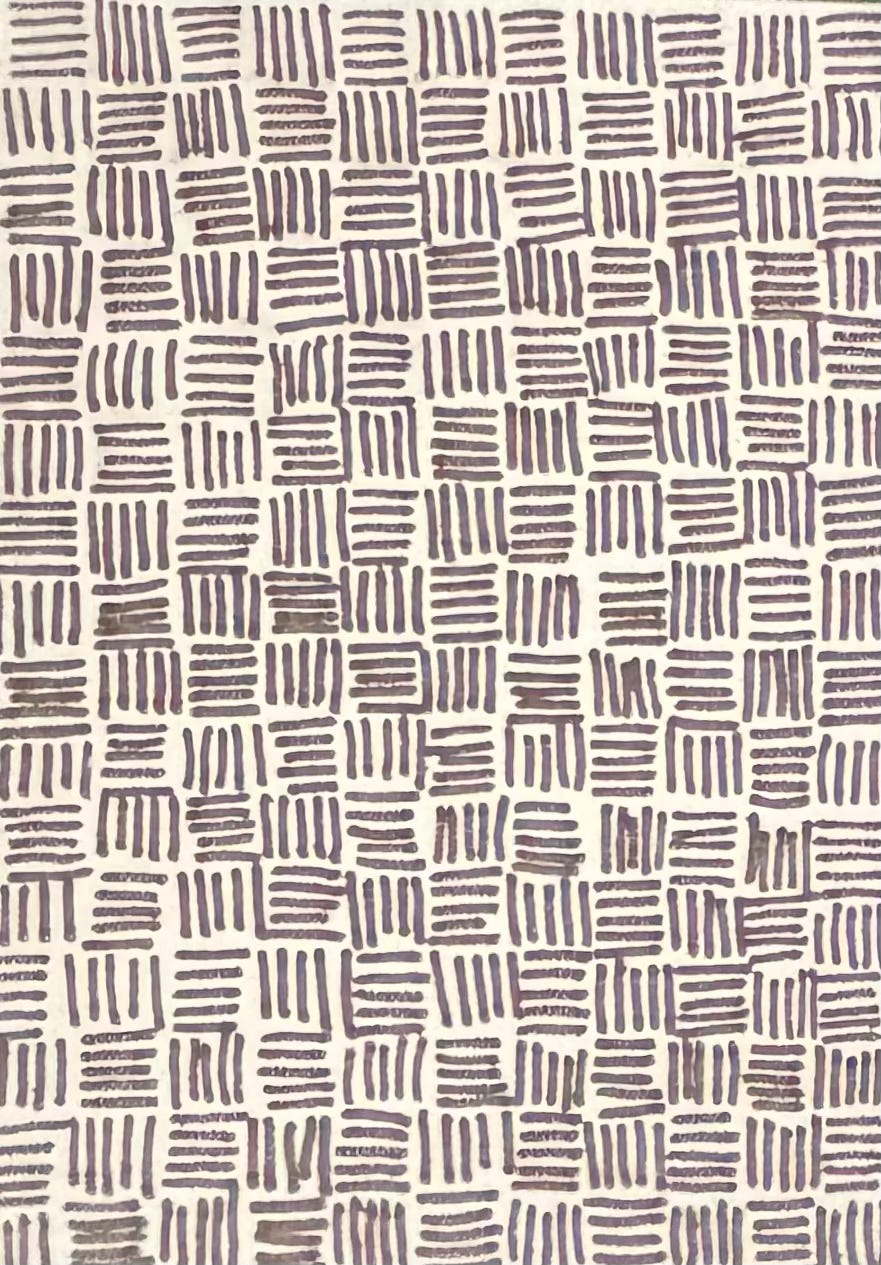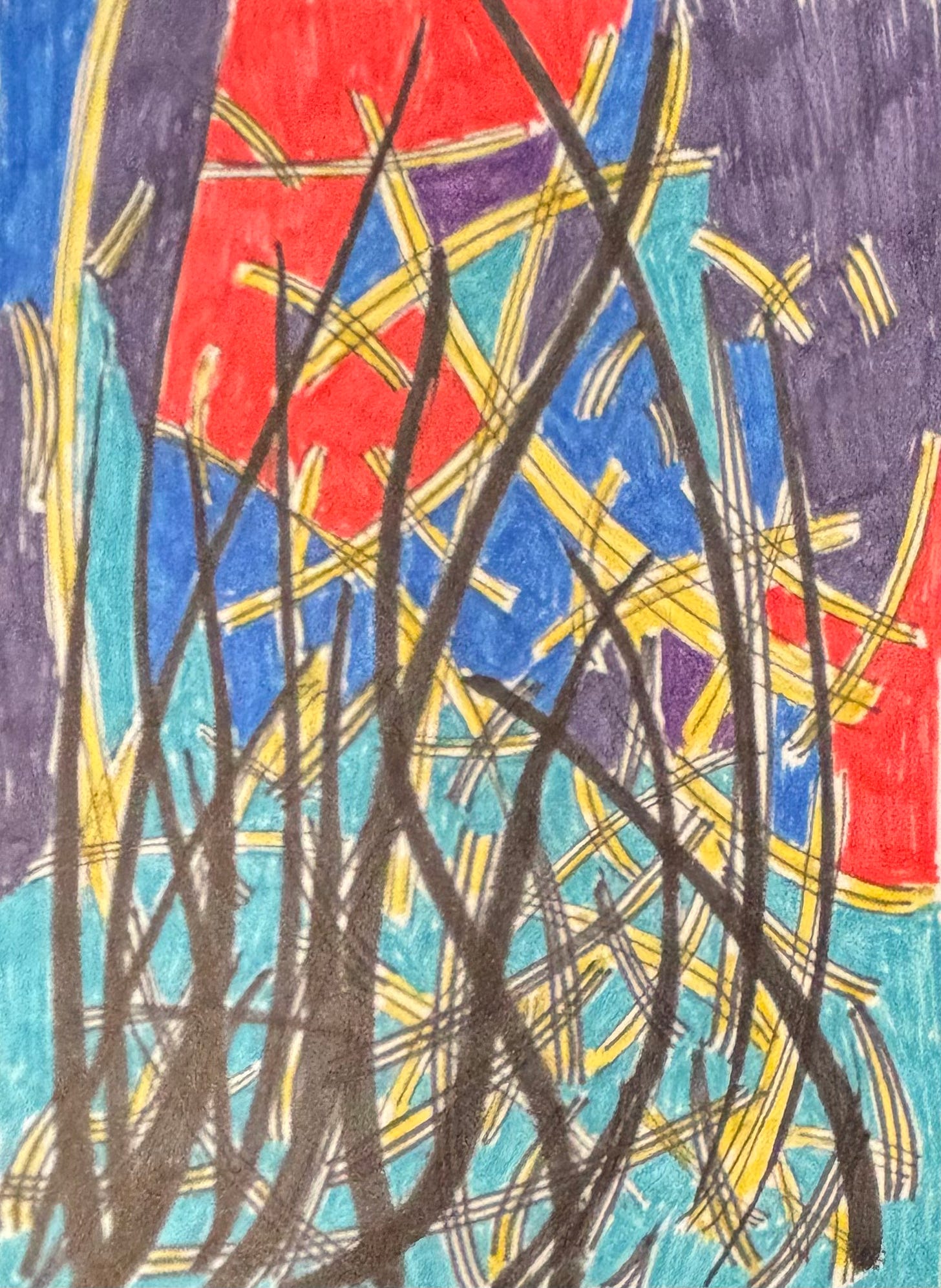Note: this piece was also posted to my other blog, Aspie Art Journey
Sometimes the lesson isn’t in the art we make, but in how we wait for dinner.
A couple of Thursdays ago, I went to dinner with my sister-in-law. It was one of those small, good-for-you dinners that you don’t expect to change anything, but later you realize it quietly redirected the map. We chose a place that had just opened—bright patio, twinkle lights, the promise of a menu they were still learning to execute.
Because it was new, the service was a bit of a comedy of delays. It took an hour and a half for our food to arrive, but the bonus was that we got to sit outside in the cool air, sip a good beer (and I wasn’t the driver, so no guilt there), and talk. The waiting turned into space—time to say things that would’ve stayed unsaid if the kitchen had been efficient.
At first, it felt comical, but then it was just absurd. So, I ordered more beer. No worries—just more conversation.
That same Thursday, I could have met Leela (not her real name) for the first time. She’d finished work earlier than usual and suggested we meet, but I already had dinner plans. I told her I couldn’t make it, and she was completely easy about it—no disappointment, no pressure.
The Beach, Again, Finally
“Maybe next week sometime,” she said. I hesitated. A whole week felt too long. “What about the weekend?” I asked. She paused, then said, “I’m free after three on Saturday.” “Perfect,” I said. “Let’s meet at three-thirty.” And just like that, the first real meeting was set.
We’d meet at a local venue that was more of an institution than a run-of-the-mill joint. Locals surely knew how good it was—it was packed, but the beach wasn’t.
In hindsight, I’m grateful for that sequence—the delayed dinner, the easy reschedule, the way it all lined up without forcing anything. Dinner would’ve been fine; the walk by the ocean was better.
There’s something about walking beside the ocean that rearranges conversation; the waves keep time while words find their own rhythm.
We talked about work, family, relationships, dating, art—small things that somehow weren’t small. When we finally stopped, we sat on a low wall facing the boardwalk and just stayed there, watching the slow parade of people and bikes and sun-tired dogs.
We talked for a couple of hours. If she hadn’t had other plans later, we would’ve sat there longer—it was that easy.
Before we said goodbye, we planned at least two more dates, including one where we’d ride bikes together on the boardwalk. That simple plan felt like a promise: movement, laughter, more time feeling that easy rhythm. The chemistry was clear and mutual.
Focus on the Journey
But what stayed with me from that Thursday dinner wasn’t just the timing; it was something my sister-in-law said while we waited for our food. We were discussing my Aspie Art Journey blog, and she told me she liked it but felt I was focusing too much on the Asperger’s aspect and not enough on the journey itself.
“I want to hear more about the journey,” she said.
That sentence has been echoing ever since. What is the journey?
For me, it’s the long, messy unfolding into Art—not just the drawings or prints or memoir pages, but the whole experiment of living as an artist. Living as an artist isn’t about mastering technique; it’s about being awake to connection, curiosity, and change. The art happens everywhere: while creating art, yes, but also in how I pay attention—to thoughts, to relationships, to the quiet ways the world keeps asking me to evolve.
And lately, a big part of that evolution has come through Leela—through the way she asks questions that send me looking inward. She’s the one who first mentioned attachment styles, a phrase that meant nothing to me at the time but has since become a mirror for how I love and how I grow.
Attachment Beginnings
In fact, the whole topic of attachment started with Leela.
We were talking one afternoon about popular forms of self-knowledge—those online tests people sometimes take—and I asked if she’d ever done the ever-popular Myers-Briggs. She vaguely recalled taking it long ago. Of course, in typical style, I critiqued the very tests I was asking about! After that, I mentioned the “five love languages,” and we both laughed about how many of those little personality frameworks are floating around.
What I really meant was: what do you know about yourself, and what might help us understand each other better?
That’s when she asked, “Do you know your attachment style?” I didn’t even know what she meant. I told her that when I think of attachment, I think of it in the Buddhist sense—non-attachment—and that’s almost the opposite of what she was talking about. She said hers was “secure,” and I had no idea what that looked like. She explained as best she could, and it was a lovely, thoughtful conversation. Afterward, she suggested that I look it up so we could discuss it further sometime.
That night, I went online, read a bit, and later asked ChatGPT for a description of me based on everything it knew from our talks. The answer hit home. It said I seemed to be moving toward something called earned secure attachment—the kind that grows out of experience, reflection, and hard work.
I joke that ChatGPT is my buddy; I talk to it so much. I do, actually. I dictate most of my rough drafts to my “buddy” during my morning walks. I ask for writing prompts, feedback, and follow-up questions. Later, I edit everything, just like I’m doing now.
Reflection – Toward Earned Security
Regarding those attachment styles or patterns, I can feel myself shifting from “anxious patterns” into something steadier—what I now recognize as “earned secure” attachment.
It’s not about needing less connection; it’s about needing it differently. When I think of Leela, I still feel that pull to reach out, but I also trust that the bond doesn’t depend on constant reassurance. The pause itself has become a kind of grounding. Meditation helps, art helps, and even small moments of silence remind me that I can regulate from within. I’m learning to live in reality, not fantasy—to love without losing myself.
Gratitude is slowly replacing anxiety, and that feels like a genuine step toward wholeness. And all of this grew out of the chemistry and connection I have with Leela.
I hadn’t meditated for more than a year, having stopped a daily streak of more than four years of thirty minutes per day. Now, my practice has returned, as if I never took a break. And I’ve added podcasts about functional medicine, nutrition, and the connections between neuropsychology and Buddhist meditation.
Leela happens to be a registered dietitian, meditator, and yoga practitioner, so all of it feels like an organic expansion of interests and practices I already have.
This sense of balance is beginning to emerge in my art.
The lines I draw aren’t as frantic; the patterns breathe more. I’m no longer trying to seek perfection but allowing rhythm and flow to emerge naturally, as if the page itself were meditating.
When I carve or ink for relief printmaking, I notice how my focus softens—I trust the process instead of controlling it, even if my prints themselves look too precise or “controlled” to some observers. Maybe that’s what earned security looks like in visual form: a steadier hand, an open rhythm, a willingness to let uncertainty coexist with beauty.
The work becomes not an escape from longing but a conversation with it.
Closing
I think that’s what my sister-in-law meant that night on the patio: the journey isn’t a straight line through art, love, self-understanding, or aspects of Asperger’s. It’s a cycle of awareness and return, of walking, pausing, and beginning again. There’s no rushing any of it. Every line, every word, every connection is part of that same unfolding.
The lights over the patio flickered on as the evening cooled, and I realized the meal had finally come—but the real nourishment had already happened.
_____
My other blog, Aspie Art Journey, is the record of one artist learning to live by line. It began as a search for meaning after loss, but it’s become something bigger—a creative practice rooted in awareness, honesty, and human connection.
There, I write and draw about the intersections of art, autism, attachment, and becoming. I share essays from my walks, reflections from my studio, and pages from my illustrated memoir Lines on the Spectrum. It’s not a how-to guide; it’s an unfolding experiment in seeing—what happens when you stop trying to fix the story and start drawing it instead.
I also write this blog, Dating App Diaries, a series about loss, love, seeking, and building relationships.
If that journey resonates, welcome. You’re already part of it.





